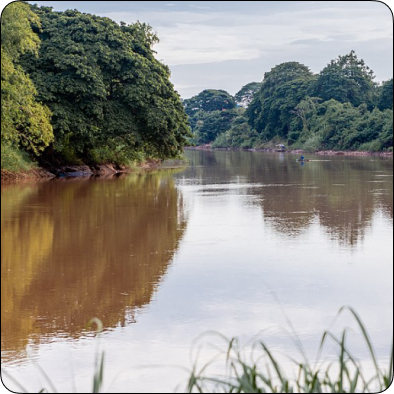Coastal Erosion Tool
Coastal Erosion Tool (CET) is an innovative, free-to-use remote sensing and GIS-based platform designed to monitor, map and analyze seasonal changes of coastline in Southeast Asia.
CET provides seasonal insights into erosion and deposition patterns in coastlines in Southeast Asia, helping communities and policymakers better understand and manage coastlines. By offering information on potential hotspots prone to erosion, based on rate of erosion and population, the tool helps communities, policymakers, and scientists make informed decisions to manage erosion prone coastlines and mitigate impacts of erosion, ensuring sustainable management of these vital ecosystems.
Explore CET
FAQ's
Why the tool matters
Coastal zones are crucial to the global economy, supporting over 40% of the world's population, serving as hubs
for
major urban centres, industrial infrastructure, and vital ecosystems, and sustaining key maritime trade routes.
These
regions are facing accelerating challenges due to both natural forces and human activities, including coastal
erosion,
cyclones, storms, and saltwater intrusion, which threaten communities, ecosystems, and economic stability.
CET offers critical insights into erosion and deposition patterns at the end of each monsoon season. This
information
enables government authorities to conduct rapid assessments of coastal erosion and its impact on various
land-use types,
facilitating informed decision-making on the level of investment required for effective coastal protection
measures.
How it can be used by stakeholders and policy-makers
The CET is a valuable resource for stakeholders involved in coastal and land management. Currently, agencies
such as the
Directorate of Water Resources and Improvement of River systems (DWIR), Myanmar use this tool to undertake
preliminary
assessments of coastal morphological changes before initiating detailed post-monsoon surveys of areas requiring
shoreline stabilization.
The long-term (30 years) historical dataset on coastal erosion and deposition helps identify hotspots, enabling
targeted
planning for mitigation and adaptation efforts. This dataset can also be enriched with additional layers, such
as census
data, infrastructure information, and socioeconomic factors, providing a comprehensive view to support
decision-making.
The tool also supports local government departments in identifying new land areas formed through deposition or
lost
through erosion, to allocated for community livelihood purposes and to keep records. Additionally, this
information is
useful for disaster management authorities to identify impacted communities and develop preliminary compensation
estimates for affected populations.
How the tool works
CET monitors the seasonal change on coastlines currently for the Gulf of Martaban, Myanmar using remote sensing images. The monitoring system enables large geographical coverage for monitoring seasonal erosion and deposition.
Read more about the development of tool here:
- • Bhatpuria, D., Matheswaran, K., Piman, T., Tha, T., & Towashiraporn, P. (2022). Assessment of Large-Scale Seasonal River Morphological Changes in Ayeyarwady River Using Optical Remote Sensing Data. Remote Sensing, 14(14), 3393. Read more
- • Tha, T., Piman, T., Bhatpuria, D., & Ruangrassamee, P. (2022). Assessment of riverbank erosion hotspots along the mekong river in cambodia using remote sensing and hazard exposure mapping. Water, 14(13), 1981. Read more
Main funding sources
Coastal Erosion Tool is funded through SEI under the Tools development fund.
